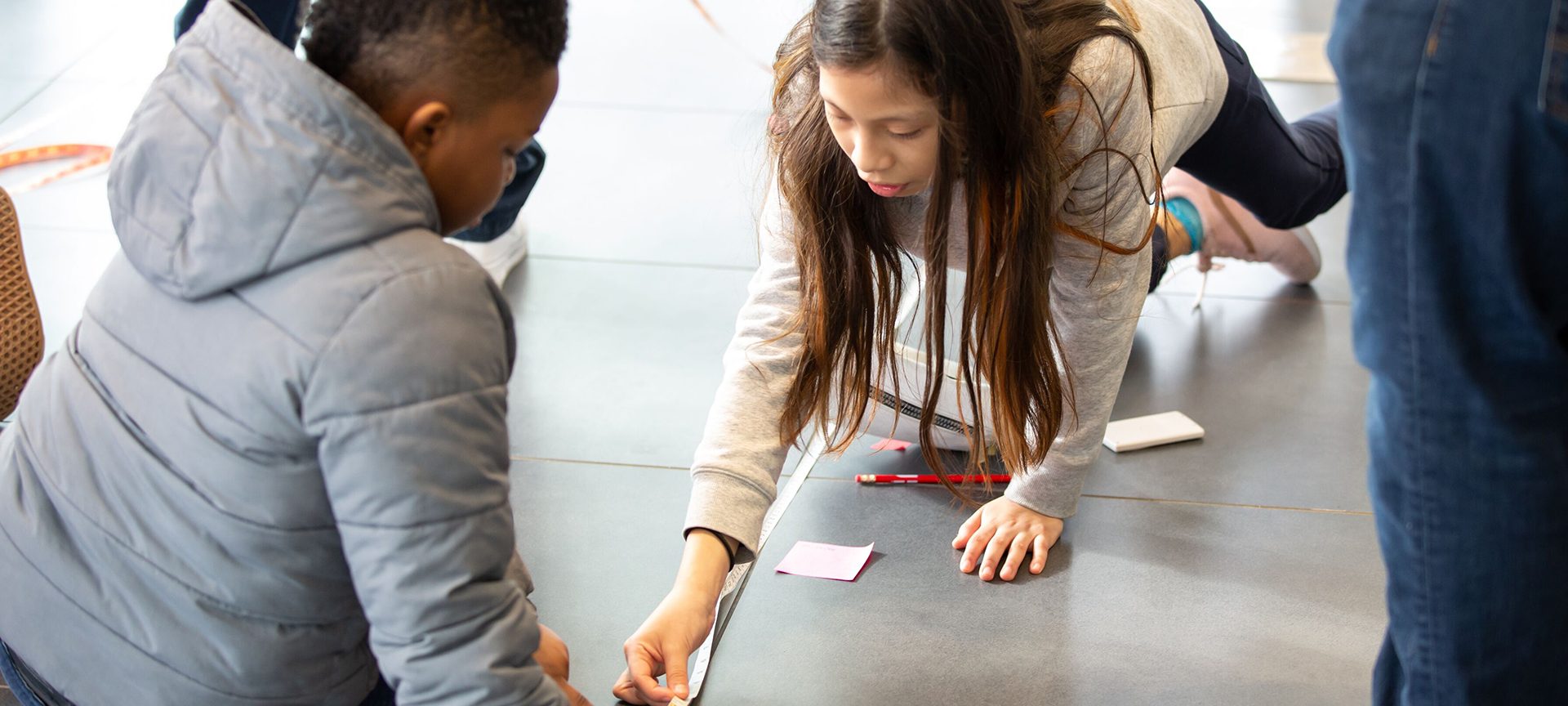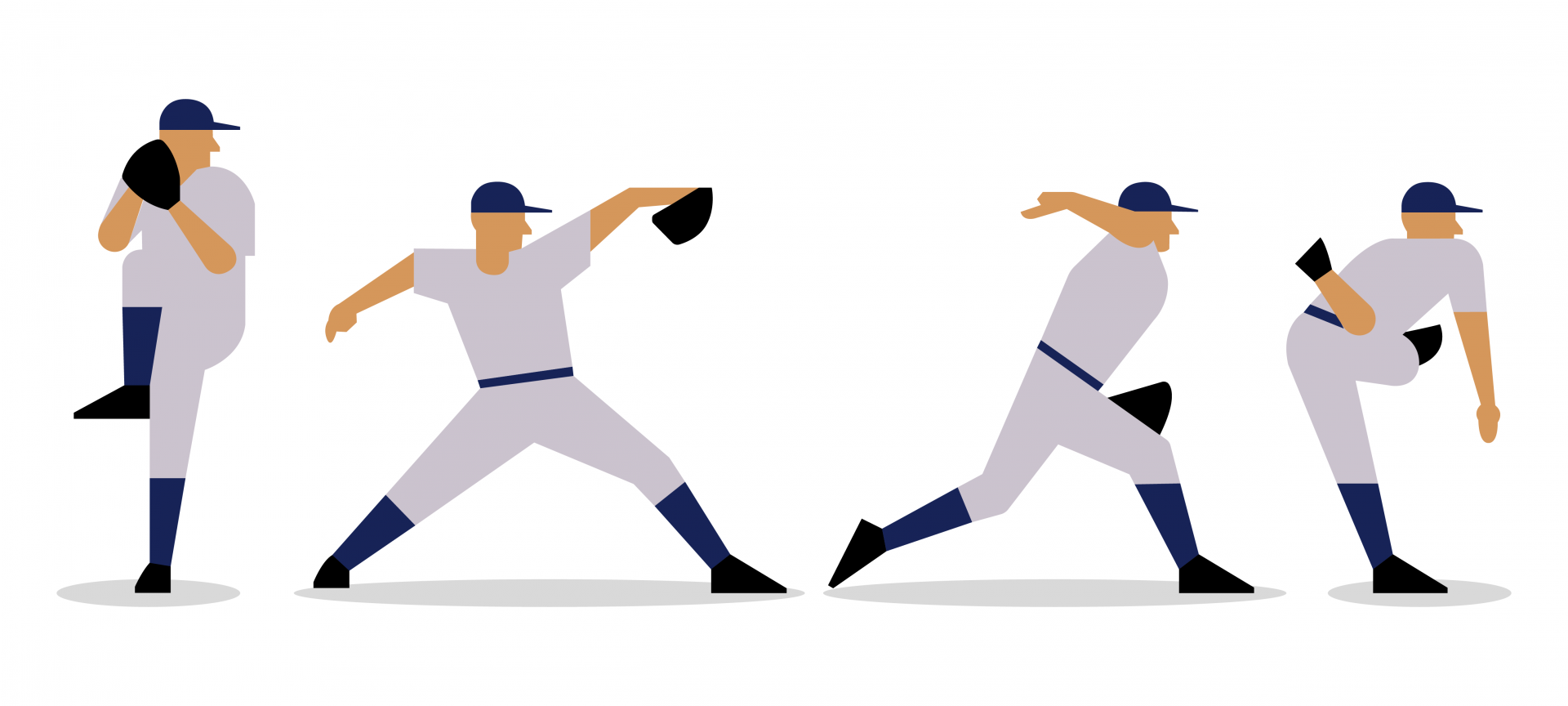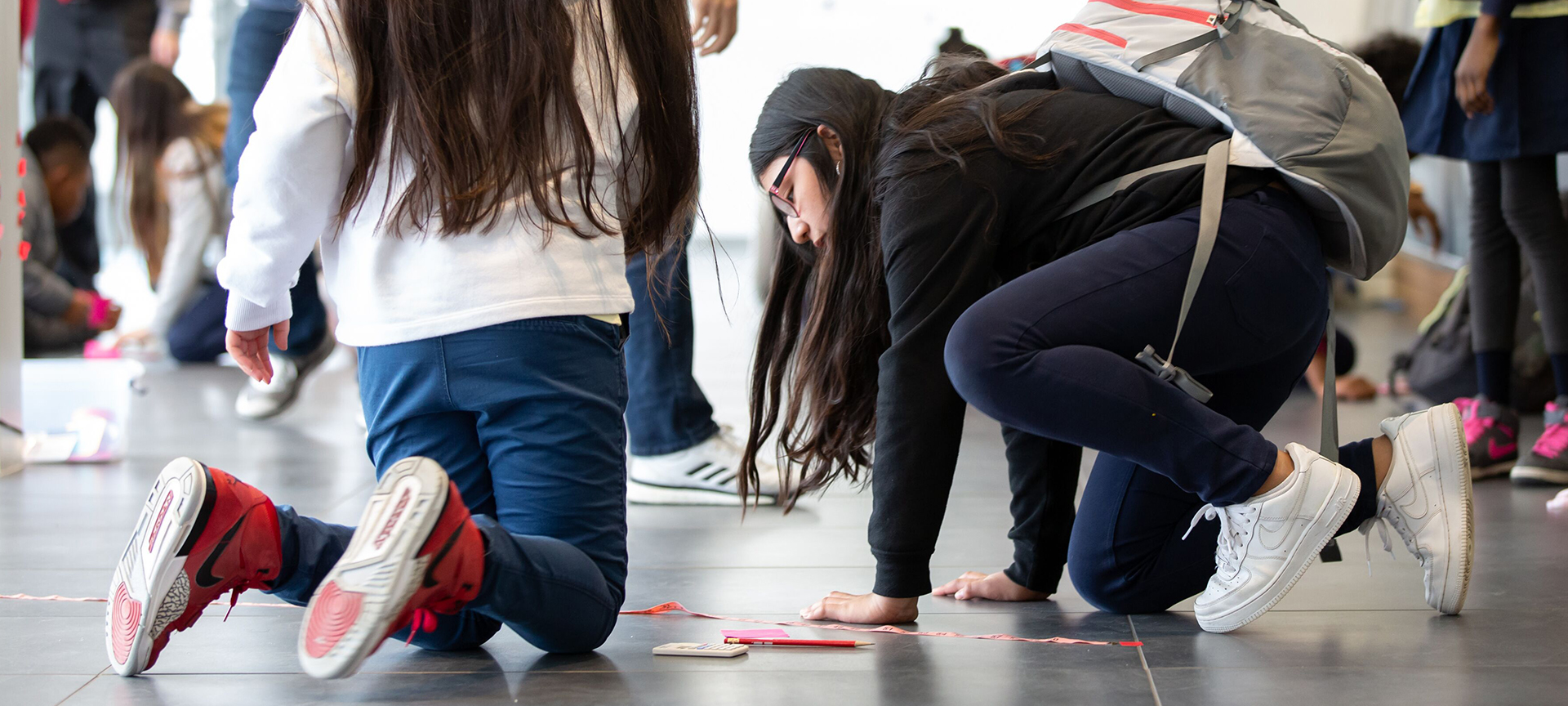The Science of Baseball Experience
Overview:
Inspired by the extraordinary life, athleticism and values of Hall of Fame catcher Yogi Berra, our STEM program uses sports to connect kids to science, technology, engineering and math in a fun and engaging way. Some of the subjects addressed by our immersive activities include:
- The Kinetic Transfer of Energy in Pitching (Newton’s Laws of Physics, Radar Technology)
- Calculating a Pitcher’s STRIDE (Measurement, Division, Percentages)
- PITCH! the Museum’s indoor, interactive baseball experience (Lasers, Radar Technology, Newton’s Laws)
- Baseball Card Math (Statistics, Averages, Probability)
Key Terms:
Through hands-on, interactive activities, students develop an experiential knowledge of such critical STEM vocabulary as energy, velocity, momentum, kinetic, radar, laser, statistics and probability.
Essential Questions:
- How are sports—baseball in particular—connected to science?
- Why are statistics important to athletes?
- Why are science and math concepts significant for other participants in professional sports, such as team owners, managers, scouts and coaches?
- In baseball, it is considered a great batting average when a player hits the ball just 30% of the time. What kinds of values and characteristics must a player embody to endure the high failure rate inherent in the game?
Part 1 – The Kinetic Transfer of Energy
A short media presentation exposes students to the body mechanics behind the Kinetic Transfer of Energy as it determines successful pitching. We define the Key Terms noted above. We watch a video of a professional pitcher executing his wind-up, first in “real time” and then in slow motion to illustrate the steps of the kinetic chain.
Essential Questions:
- How does throwing the ball in three different positions demonstrate the Kinetic Transfer of Energy?
- What do you notice about the effect of position on pitching speed change?
- Why do the pitching position and speed of the ball matter to a professional pitcher?
Objectives:
Students will:
- Identify and understand the Kinetic Transfer of Energy in sports (also known as Sequential Summation of Movement)
- Identify and understand Momentum in sports
- Discuss examples of how Science and Math are embedded in all sports
The students try their hand at throwing soft balls, experiencing kinesthetically how different body positions impact pitching trajectories and speeds. The experiment takes students through three pitching positions, each time inhibiting a particular body part, culminating in a full-body wind up. Throughout the process, the students’ pitching speeds are measured by their peers using a professional sports radar device, and notated on statistics cards they can take home. Typically throwing speeds increase as the students are able to use more of their bodies, allowing them to experience the concept of the Kinetic Transfer of Energy in a way that is both immersive and fun.
Part 2 – Calculating Stride
Students explore the significance of a pitcher’s “stride” in relation to throwing speeds. Pitching stride is the distance between the pitcher’s two feet after the lunging step that comes out of the wind-up. This stride length can be viewed as a percentage of the pitcher’s height. Knowing this percentage is important for athletes as a measure of potential performance.
Essential Questions:
- What is the mathematical relationship of stride to height?
- How does stride length affect pitching ability? (i.e., how fast and far the ball is thrown)
- Why does knowing a pitcher’s stride matter?
- In what other sport(s) does stride matter?
Objectives:
Students will:
- Understand the relationship between a pitcher’s stride and height and how that relationship affects performance
- Practice math equations using decimals, percentages and “rounding up”
- Discuss examples of how stride contributes to effective pitching
In small groups, students calculate their strides using tape measures, calculators, tape, pencils and Post-its. Students then lie down on the floor, measure and mark their height from head to heel. Putting their math skills to work, students must determine what percentage their stride is of their height. Results, (including stride length, height and then percentage of stride to height) are recorded on Post Its and stuck to the wall where the class can examine each other’s strides as percentages of their respective heights.
The stride activity culminates with a short video about famed pitcher Aroldis Chapman, closer for the N.Y. Yankees. The video looks at Chapman’s extraordinary stride (which is longer than his height!) along with other measurements and scientific concepts behind successful pitching and hitting.
What Teachers Are Saying
“The Math [in the Yogi Berra STEM program] was directly connected to the 6th grade Math curriculum I’m currently teaching! It was great to have that reinforced.”
—6th Grade Math Teacher, Charles J. Riley School #9, Paterson
“I brought my 9th & 10th graders to experience the STEM program at the Yogi Berra Museum, and the trip exceeded my high expectations. The program was interactive and fun, and it got the kids up and moving. They thought about science and math in a way they don’t at school.”
—Math Teacher/Baseball Coach, Bristol Central High School
“[Yogi Berra Museum’s STEM] virtual trips were so exciting and provided extremely high quality examples of science instruction, especially in this remote learning environment. The museum staff really connected Science & Math to sports in a way that was so meaningful and fun for kids.”
– Teacher from William Horton School
NJ State Standards
4-PS3 SCIENCE, Grades 3-5
Asking Questions and Defining Problems. Asking questions is essential to developing scientific habits of mind. Even for individuals who do not become scientists or engineers, the ability to ask well-defined questions is an important component of science literacy, helping to make students critical consumers of scientific knowledge. Students will demonstrate an understanding in:
- Asking questions and predicting outcomes about the changes in energy
- Energy can be transferred in various ways between objects
- Asking questions that can be investigated and predict reasonable outcomes based on patterns such as cause and effect relationships
MATH, GRADE 5
- Apply and extend previous understandings of multiplication and division.
- Interpret a fraction as division of the numerator by the denominator (a/b = a ÷ b).
- Solve word problems involving division of whole numbers leading to answers in the form of fractions or mixed numbers, e.g., by using visual fraction models or equations to represent the problem.
MS-PS3-1. PHYSICAL SCIENCE, GRADE 8
Construct and interpret graphical displays of data to describe the relationships of kinetic energy to the mass of an object and to the speed of an object.



